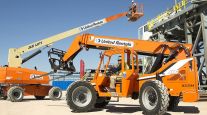Staff Reporter
ASCE Report Card: Infrastructure Improves to C-
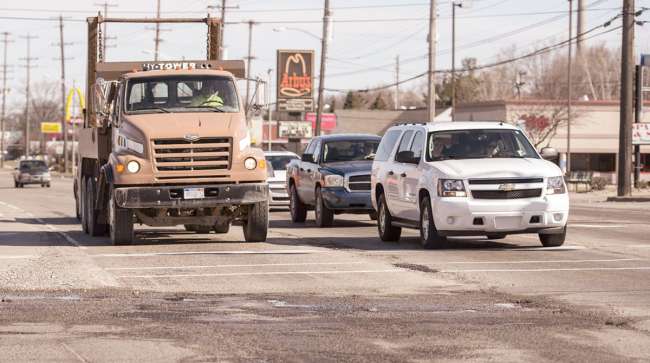
[Stay on top of transportation news: Get TTNews in your inbox.]
The nation’s infrastructure received a C- grade on the American Society of Civil Engineers’ latest report card, marking an improvement from D+.
ASCE released its 2021 Report Card for America’s Infrastructure on March 3.
The grade is a slight increase from the D+ scored on ASCE’s previous national report card in 2017.
ASCE Report Card on Roads-2021 by Transport Topics on Scribd
The quadrennial assessment considered 17 aspects of infrastructure: roads, ports, rail, bridges,aviation, dams, drinking water, energy, hazardous waste, inland waterways, levees, parks and recreation, schools, solid waste, storm water, transit and wastewater.
Roads did not show improvement. The sector received an overall grade of D, the same as on the 2017 report card. According to ASCE, approximately 40% of the road system is in poor or mediocre condition.
Bridges, meanwhile, earned a C — a slight drop from C+ in 2017 — partially because of the number of bridges that slid from “good” condition to “fair.”
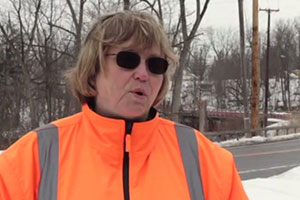
Lehman (ASCE)
ASCE member Maria Lehman, an engineer based in Buffalo, N.Y., who presented the grades for these two categories, said there is a $786 billion backlog for roads and bridges. She said deficient infrastructure costs truckers and passenger vehicle drivers since about 8% of bridges are structurally deficient, meaning they cannot accommodate a fully loaded tractor-trailer.
“There’s been a lot of focus on trying to maintain the interstate system, but it’s the last mile that really gets critical,” Lehman said. “It’s not just about safety concerns. It’s about getting those interstate trucks across and being able to deliver their goods and services.”
Eleven categories — aviation, dams, hazardous waste, inland waterways, levees, public parks, roads, schools, stormwater, transit and wastewater — received grades in the D range. Rail earned a B, the highest score on the report card.
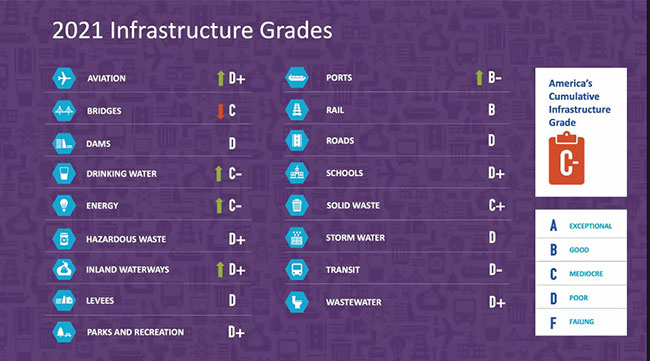
American Society of Civil Engineers' report card gives a grade to 17 infrastructure-related categories (ASCE)
“The nation’s 140,000-mile rail network is its healthiest ever thanks to $25 billion on average in annual private investments,” Association of American Railroads CEO Ian Jefferies said.
ASCE’s report showed that, between 2017 and 2019, Amtrak spent $713 million on state-of-good-repair projects.
Despite the modest overall improvement, ASCE’s report found the country is spending half of what is required to support its infrastructure — and the investment gap continues to grow. The funding gap rose to $2.6 trillion from $2.1 trillion over 10 years , which translates to $259 billion per year.
Lack of infrastructure investment will have negative long-term economic effects, according to the report card. If the funding gap isn’t closed, the economy will lose $10 trillion in growth by 2039. ASCE representatives urged Congress to take action on infrastructure quickly.

Graves
Rep. Garret Graves (R-La.), who serves on the House Committee on Transportation and Infrastructure, said “it’s millions now or it’s billions later,” in terms of investing in good infrastructure. Graves spoke at ASCE’s Solutions Summit, also March 3.
Participants in ASCE’s event said that infrastructure investment generally receives bipartisan support, but how to pay for it often is a point of contention. ASCE representatives acknowledged that multiple financing mechanisms should be considered to boost infrastructure. The report noted 37 states have raised fuel tax rates since 2010, which has helped fund transportation investments.
Lehman said such financing activity should serve as an “a-ha moment” for legislators.

Smith
“Funding is required to maintain our infrastructure,” ASCE Executive Director Thomas Smith said. “There’s a lot of different parts to this solution. There’s a lot of different tools in the toolbox to do this.”
Maryland Gov. Larry Hogan, who previously served as chairman of the National Governors Association, said he had a productive meeting with President Joe Biden and Vice President Kamala Harris about infrastructure. Hogan said investment in infrastructure can be an important part of putting more people to work and spurring the economy as the country recovers from the financial challenges of the COVID-19 pandemic.
“[Biden] agreed with me that investing in infrastructure and working on a federal infrastructure package with Democrats and Republicans coming together was critical to our economic recovery,” Hogan said. “If we can’t find a consensus on infrastructure across the aisle, then I’m not sure we can find bipartisan agreement on anything. I think this is something where we can find bipartisan agreement.”
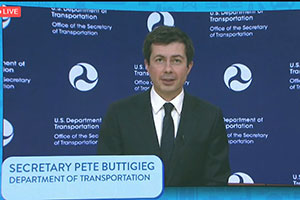
Transportation Secretary Pete Buttigieg (ASCE)
Transportation Secretary Pete Buttigieg, who delivered remarks during the event, said the administration will focus on a COVID-19 relief package before tackling comprehensive infrastructure legislation. Biden has proposed a $1.9 trillion economic aid package to assist with COVID-19 recovery.
The bill would dedicate $20 billion for transit operations, many of which have been struggling during the pandemic.
“The results of this report card tell us what we already know, which is that we’ve got a long way to go,” Buttigieg said. “Our infrastructure is in tough shape. It doesn’t have to be this way, but it also won’t change unless we make different choices and that means a meaningful, generational investment in our country’s infrastructure.”
Want more news? Listen to today's daily briefing below or go here for more info:




